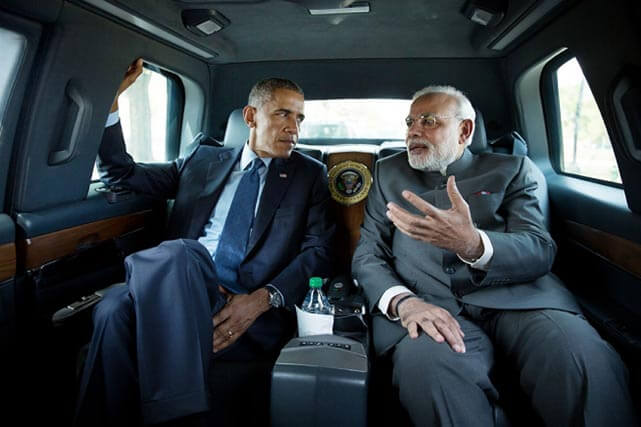This article was originally published in The Wall Street Journal’s Washington Wire.
When news broke that the U.S. had signed a far-reaching climate deal with China, I wondered: Could the U.S. and India reach a similar deal?
While in India this month, I was struck by the poor air quality. Walking around New Delhi sometimes felt like being in a smoky house. The air seemed much worse than what I remembered experiencing in China last year.
Recent measures of particulate matter in some parts of New Delhi were the highest of any city in the world. A World Health Organization study published in May concluded that 13 of the world’s 20 most polluted cities are in India, with New Delhi at No. 1. Researchers project that by 2020 India’s carbon levels will match, if not surpass, those of China, currently the world’s biggest emitter.
The causes of India’s fetid air quality are many. They include the huge number of emissions-belching cars crowding India’s cities and agricultural policies that involve farmers burning their fields to prepare for new planting seasons. When I was in northern India in late October, the smog resulting from such burning was so intense that it eliminated all visibility. (It also prevented my flight from landing at the airport in Chandigarh, one of the largest cities in northern India.)
Climate change is a sensitive issue. Like many developing nations, India has stressed the importance of economic growth and suggested that this goal must trump considerations of lowering carbon emissions. Significantly, Prime Minister Narendra Modi decided not to attend the U.N. climate summit in September. He elicited much derision when, during his speech at the U.N. General Assembly, he embraced yoga as a way to deal with climate change.
That said, India is well aware of its vulnerability to climate change, particularly because of its populous coastal regions. The Center for Global Development’s Climate Vulnerability Index has calculated that by 2050, nearly 40 million people in India could die from rising sea levels. It also projects that rising temperatures could cause India’s agricultural productivity to plummet 35% to 40% by 2080.
Mr. Modi has, in fact, pursued climate-friendly policies. When he was chief minister of Gujarat state, he developed the largest solar park in Asia. And when he met with President Barack Obama in Washington, the two leaders concluded a series of small agreements on climate change. The accords build on previous efforts that include joint action to reduce emissions from deforestation.
As Mr. Modi’s visit to the U.S. put bilateral relations on an upward trajectory, here’s hoping for even better things on climate diplomacy.







